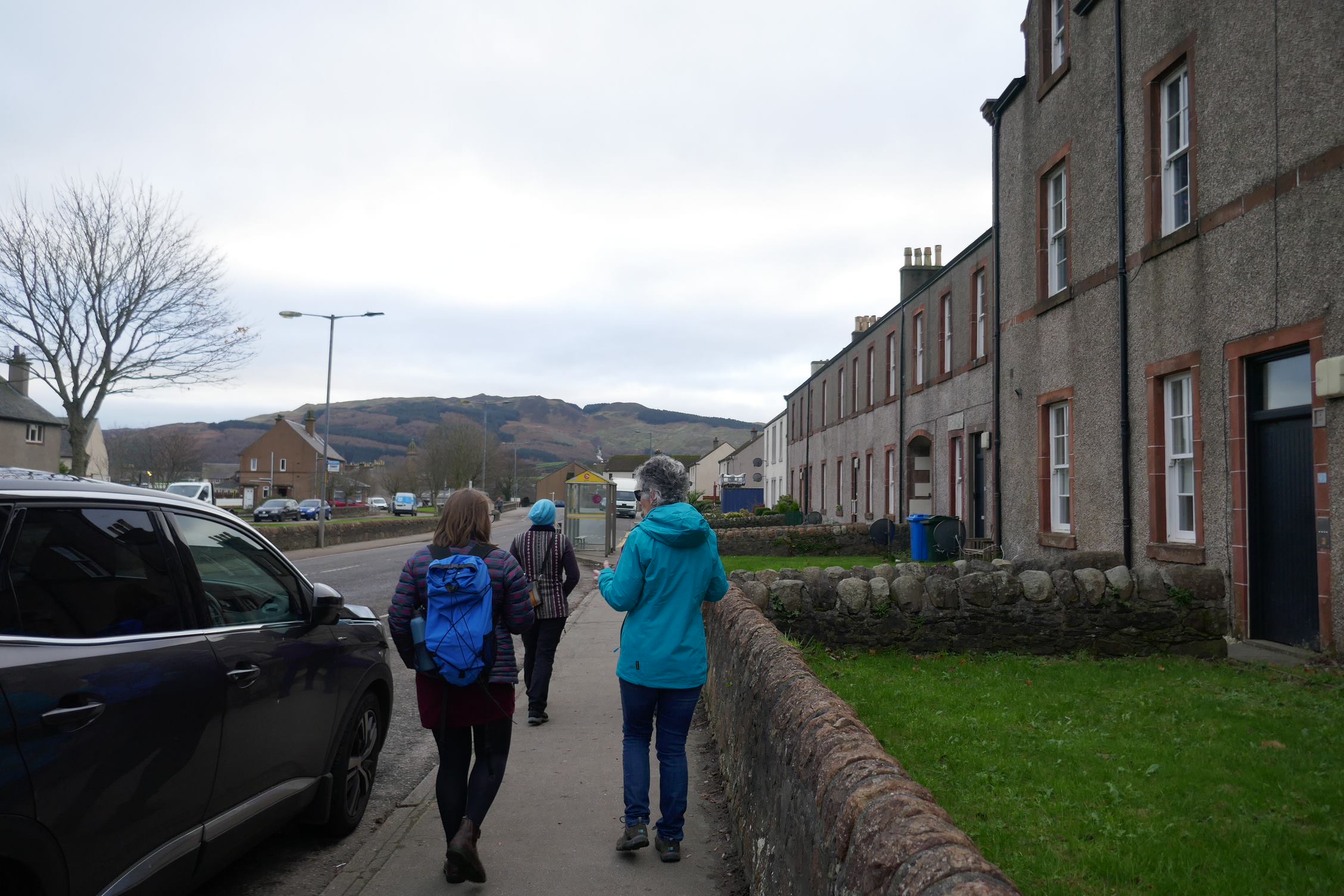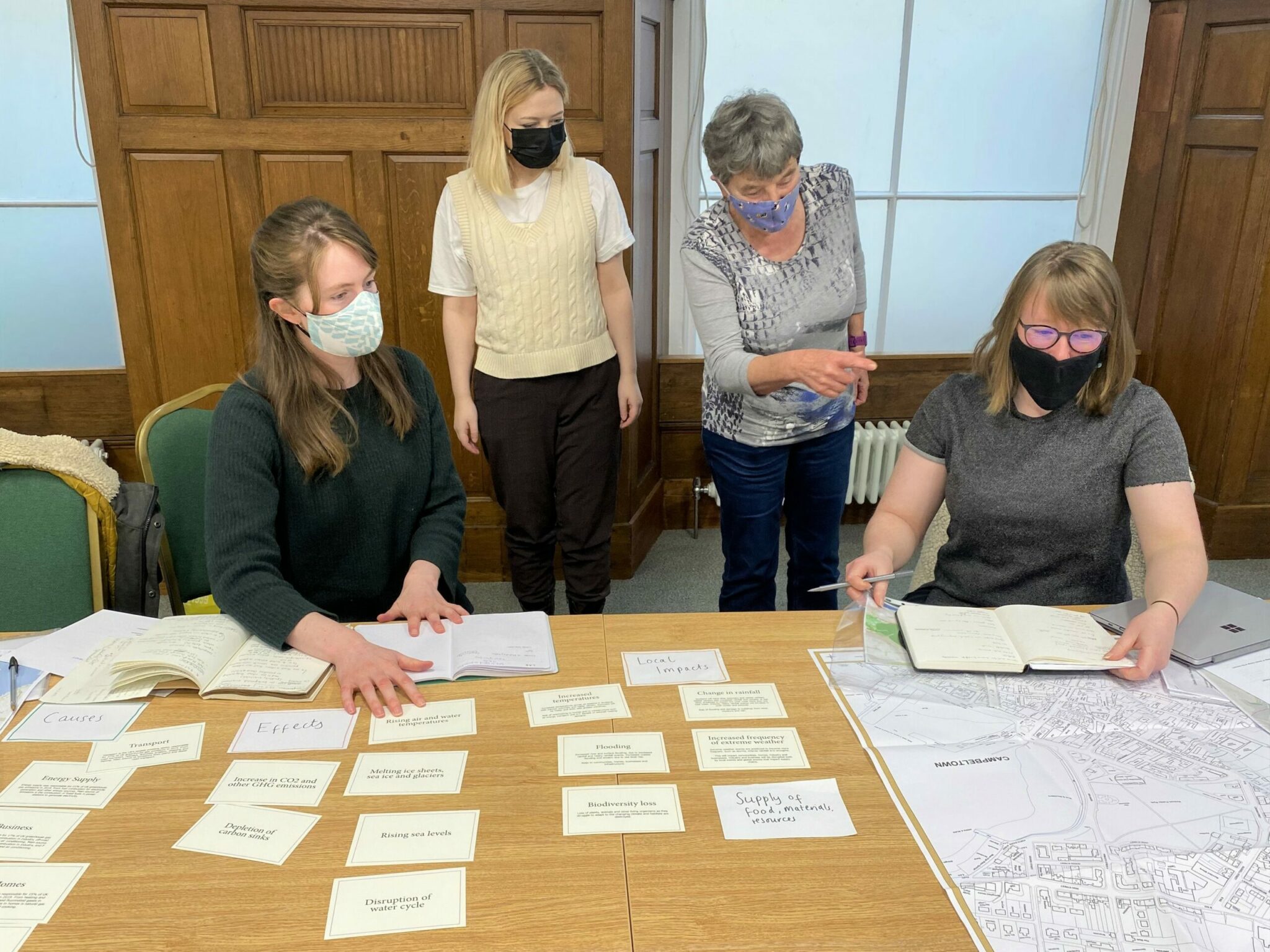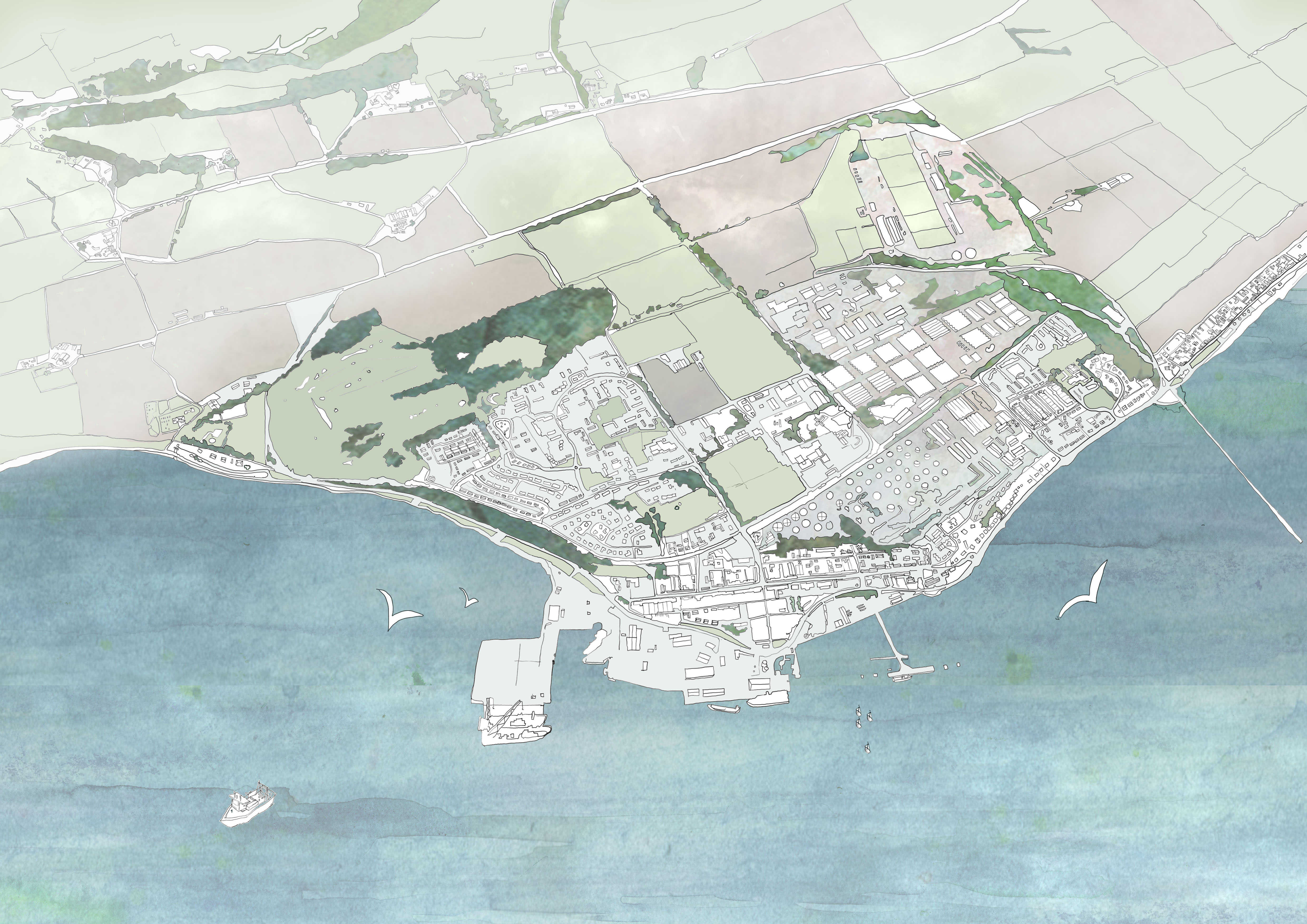This year, we have learned that the people and organisations we have connected with are eager to understand what the climate emergency means for them and their towns, but are mostly unsure what action to take, and where to start.
This, paired with a perceived lack of visible local examples of long-term climate change, means that the urgency for physical adaptation and behavioural change is not being acted upon as rapidly as required.
Through a year of listening and learning, we have established that there is significant opportunity to support communities to enhance their climate literacy and to identify place-based climate action that they can take in their towns.
In year two, we will build on this work and start to ‘mobilise’ action, working closely with the networks and partnerships that we have developed during year one.
What this page covers
Our team at Architecture and Design Scotland put together a short summary that includes key findings and lessons learned from year one of the Climate Action Towns project. Click on the links below to navigate to the selected learning.
- Well received and data-driven approach methodologies
- Communities want to act on the climate emergency
- Aligning with existing place-based work
- Convening and collaborating with people
- Relationships and ways of working
- The impacts of the Covid-19 pandemic
This page includes outtakes from the Climate Action Towns year one review summary pamphlet. The comprehensive report is also available by getting in touch with a member of our team.
Well received and data-driven approach methodologies
Our methodologies have been beneficial to the project and to other organisations. The data-driven approach to town identification and a place-led approach to support has led to a wide range of approaches being used to support community led climate action.
What have we learned?
- Stakeholder maps will be useful to others working in the towns
- Mapping helps make climate change risks and issues tangible
- A data-driven approach is beneficial and instils confidence locally
Communities want to act on the climate emergency
Climate awareness and knowledge varies across the Climate Action Towns. Communities want to act on the climate emergency but are unsure about where or how to start. Even where they are overwhelmed by the topic, communities want to understand what climate action means and what action is needed locally.
What have we learned?
- Start conversations with local changes rather than climate change
- Illustrating local climate change impacts and actions is a challenge
- Tangible precedents are needed
- Resources and timescales vary
- Respect a community’s boundaries
Aligning with existing place-based work
Taking the time to understand each of the local policy and planning landscapes has helped to build stakeholders’ trust. Each place-specific piece of work that we are supporting has required a unique approach to integrate climate action. However they are all working to translate national and regional policy and approaches at a local level.
What have we learned?
- More local scale climate data is needed to illustrate risk and support decision making
- It is better to build on existing place-based work than start from scratch
- Measuring the impact of the project will take more than a year
- A forum for sharing learning would be beneficial

Relationships and ways of working
Building relationships takes time, especially with stakeholders outside existing council networks. The towns are spread across six Local Authorities, who all work effectively but in different ways and with differing structures, so there is no one size fits all approach for Climate Action Towns delivery.
What have we learned?
- Good conversations need time
- The project is inspiring other work
- Take time to understand local networks and relationships
- Initiation meetings are valuable
- Annual funding impedes momentum
Convening and collaborating with people
Climate Action Towns ability to convene is creating connections and an overspill effect. The project is having a positive impact on partners and their confidence to link the climate emergency to their work, involving people who wouldn’t normally participate in decision making.
What have we learned?
- Our ability to convene is fruitful
- The Place Principle is proving helpful in realising opportunities in the towns
- Linking local, regional and national scales is enhancing project outcomes

The impacts of the Covid-19 pandemic
Lockdown has limited our physical presence in the Climate Action Towns, which has meant it has taken time to develop relationships and trust with local stakeholders. However, it has also meant that we have had more contact with those we have reached, and they have had access to the technology to do so.
What have we learned?
- Access to technology varies
- Remote working extends our reach
- In the same way that our towns responded to the Covid-19 pandemic, extreme weather events resulting from climate change will require resilience and collective action
The importance of the Climate Action Towns project
The climate emergency demands urgent action from us all. To protect Scotland from the impact of climate change, we all need to work together to adapt the ways we live, work, play and move in our places.
In 2020 the Scottish Government’s Programme for Government ‘Protecting Scotland, Renewing Scotland’ committed to develop a network of Climate Action Towns, focussing on small towns with little historical involvement in climate action.
To realise this, we have developed the Climate Action Towns project, investigating the intersection between community action, climate action and the Place Principle.
In line with our Corporate Strategy, the Climate Action Towns project supports the delivery of the Place Principle and the Scottish Government’s Climate Change Plan and Just Transition commitments.
A comprehensive report on Climate Action Towns
Everything you need to know about Climate Action Towns is also available in our year one review report. If you would like to gain access to this comprehensive report, please get in touch with a member of our team and we will email this to you directly.

